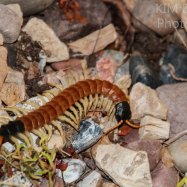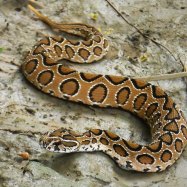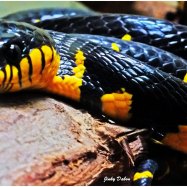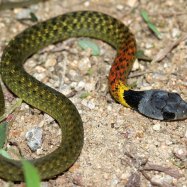
Black Bass
30-60 cm
Black Bass, also known as the largemouth bass, is a popular game fish found in temperate and subtropical regions. With its streamlined and elongated body shape, it can reach a length of 30-60 cm. It belongs to the Centrarchidae family and is known for its fierce fighting ability, making it a favorite among anglers. With its distinctive coloring and powerful jaws, the Black Bass is a sought-after catch for both sport and table fishing enthusiasts.
Animal Details Summary:
Common Name: Black Bass
Kingdom: Animalia
Habitat: Freshwater lakes, rivers, and ponds
The Mighty Black Bass: Predator of Freshwater
Imagine gliding through the crystal-clear waters of a serene lake, surrounded by lush green forests and the gentle chirping of birds. Suddenly, at the blink of an eye, you spot a sleek and powerful figure lurking under the surface. With lightning-fast reflexes, it lunges towards its prey, creating a stunning display of agility and strength. This magnificent creature is none other than the Black Bass, a highly adaptable and intelligent predator that roams the freshwater habitats of North America, Europe, Asia, and Africa Black Bass.With their scientific name, Micropterus, deriving from Greek roots meaning "small fins," these creatures are anything but small when it comes to their reputation and prowess as hunters. They belong to the order Perciformes, which includes over 41 families of fish, making them one of the most diverse and successful groups of animals in the world.
Kingdom: Animalia
As members of the Animalia kingdom, Black Bass are classified as eukaryotic organisms, meaning they have cells with a true nucleus and membrane-bound organelles. They are also multicellular, unlike bacterial and single-celled organisms.
Phylum: Chordata
Black Bass belong to the phylum Chordata, a group that includes all animals with a notochord (a flexible rod that runs the length of the body). This chordate characteristic appears in the early stages of their development, giving evidence of their evolutionary history.
Class: Actinopterygii
The Black Bass falls under the class Actinopterygii, commonly known as ray-finned fish. The most distinctive characteristic of this group is the presence of bony rays that support their fins. This class makes up more than 95% of all fish species, highlighting the Black Bass's vast and diverse fish family Bison.
Order: Perciformes
As a member of the order Perciformes, the Black Bass shares its classification with other predatory fish such as perch, tuna, and swordfish. This order is named after their unique feature of "perching" - meaning to sit on their fins.
Family: Centrarchidae
The Centrarchidae family, also known as the sunfish family, includes small to medium-sized fish that are characterized by their compressed bodies, round shape, and large mouth. The Black Bass is a prominent member of this family, along with other popular game fish such as bluegill, crappie, and pumpkinseed.
Habitat: Freshwater lakes, rivers, and ponds
Black Bass are found in a variety of freshwater habitats, including lakes, rivers, and ponds. They prefer clear, calm waters with ample cover, such as weeds, rocks, and fallen trees, to hide and ambush their prey. Due to their adaptability, they can also survive in shallow or deep waters, as long as their environmental needs are met.
Feeding Method: Carnivorous
As apex predators, Black Bass have a diverse diet that consists primarily of other fish, insects, and crustaceans. They are opportunistic hunters, meaning they will eat whatever is available at the time. With their powerful jaws and sharp teeth, they are well-equipped to capture and consume their prey. They have also been known to eat small mammals, amphibians, and even birds.
Geographical Distribution: North America, Europe, Asia, and Africa
Black Bass are native to North America, but they have been introduced to other continents like Europe, Asia, and Africa due to their popularity as a game fish. While some populations have established themselves in these new regions, they are still considered invasive species and can disrupt the existing ecosystem.
Country of Origin: United States
The Black Bass is most commonly associated with the United States, as it is native to the country and has been a popular sport fish for centuries. In fact, the first written records of bass fishing date back to the late 1700s, in the southern states of the US.
Location: Temperate and subtropical regions
Black Bass can be found in both temperate and subtropical regions, as long as the water bodies provide suitable conditions for their survival. They have shown remarkable adaptation abilities, thriving in various temperatures and water qualities.
Animal Coloration: Olive-green to black
One of the most striking features of the Black Bass is its coloration, which can vary from olive-green to black. This color change is a natural camouflage mechanism that helps them blend into their environment, making it easier for them to sneak up on unsuspecting prey.
Body Shape: Streamlined and elongated
Black Bass have a streamlined and elongated body shape, ideal for cutting through the water with speed and agility. They are also equipped with strong pectoral and pelvic fins, which help them maneuver through the water with precision.
Length: 30-60 cm
On average, Black Bass can grow up to 30-60 cm in length, with females typically being larger than males. However, there have been rare cases of these fish reaching over 70 cm in length, earning them the nickname "Bigmouth Bass."
The Evolution of Black Bass
Black Bass have been around for millions of years, making them one of the oldest and most successful fish species on the planet. Fossil records show evidence of their existence dating back to the Eocene epoch, approximately 54 million years ago.
Their evolutionary journey can be traced back to a time when the continents of North America and Europe were connected by a land bridge. This allowed for the migration of various fish species, including Black Bass, from one continent to the other.
Over time, these fish adapted to the diverse habitats, leading to the development of various sub-species, each with unique characteristics and adaptations. Today, there are nine recognized sub-species of Black Bass, including the popular largemouth, smallmouth, and spotted bass.
Behavior and Social Dynamics
Black Bass may seem like solitary creatures, lurking alone in the depths of freshwater lakes. However, these fish have surprisingly complex social dynamics, often exhibiting a hierarchy within their population.
During spawning season, male Black Bass will fiercely guard their nests and fend off any intruders, creating clear boundaries within their community. They have also been observed exhibiting cooperative hunting behavior, where a group of individuals work together to corner and capture their prey.
Besides their social dynamics, Black Bass are also known for their intelligence and adaptability. Studies have shown that they can learn and adapt to new environments, solve problems, and remember specific details, making them one of the most impressive fish species in terms of cognitive abilities.
The Sport of Bass Fishing
As mentioned earlier, Black Bass has been a popular game fish since the late 1700s, and its popularity has only grown in recent years. In the US alone, over 11 million people participate in bass fishing, making it one of the top recreational activities in the country.
The attraction to bass fishing comes from the thrill and challenge of catching such a powerful and cunning fish. Anglers use specialized techniques, lures, and equipment to entice a bite from these elusive creatures. But catching a Black Bass is not just about the end result; it is also about the experience of being in nature and facing the unknown.
However, with the rise in popularity of bass fishing, there has also been an increase in conservation efforts to protect and maintain the population of Black Bass in their natural habitats. Organizations such as Bass Anglers Sportsman Society (B.A.S.S) and Keep America Fishing work towards promoting sustainable fishing practices and preserving the health of the ecosystem.
Threats to Black Bass Population
Despite their adaptability and resilience, Black Bass still face threats to their population, particularly from human activities. Pollution, habitat destruction, and overfishing are some of the main factors contributing to the decline of their numbers in certain areas.
Invasive species, such as carp and Asian carp, also pose a threat to the Black Bass population as they compete for resources and disrupt the natural balance of the ecosystem. Climate change is also a growing concern, as rising water temperatures and changes in weather patterns can affect the quality and availability of habitat for these fish.
In Conclusion
The Black Bass is a remarkable creature, with a long and fascinating evolutionary history. Its adaptability, intelligence, and powerful hunting abilities make it a top predator in the freshwater habitats it calls home.
From its humble beginnings in North America to its spread across the world as a popular game fish, the Black Bass continues to captivate and enthrall us with its beauty and strength. As we strive towards conservation efforts, we can hope to see these majestic fish thriving for generations to come, reminding us of the importance of preserving our natural world.

Black Bass
Animal Details Black Bass - Scientific Name: Micropterus
- Category: Animals B
- Scientific Name: Micropterus
- Common Name: Black Bass
- Kingdom: Animalia
- Phylum: Chordata
- Class: Actinopterygii
- Order: Perciformes
- Family: Centrarchidae
- Habitat: Freshwater lakes, rivers, and ponds
- Feeding Method: Carnivorous
- Geographical Distribution: North America, Europe, Asia, and Africa
- Country of Origin: United States
- Location: Temperate and subtropical regions
- Animal Coloration: Olive-green to black
- Body Shape: Streamlined and elongated
- Length: 30-60 cm
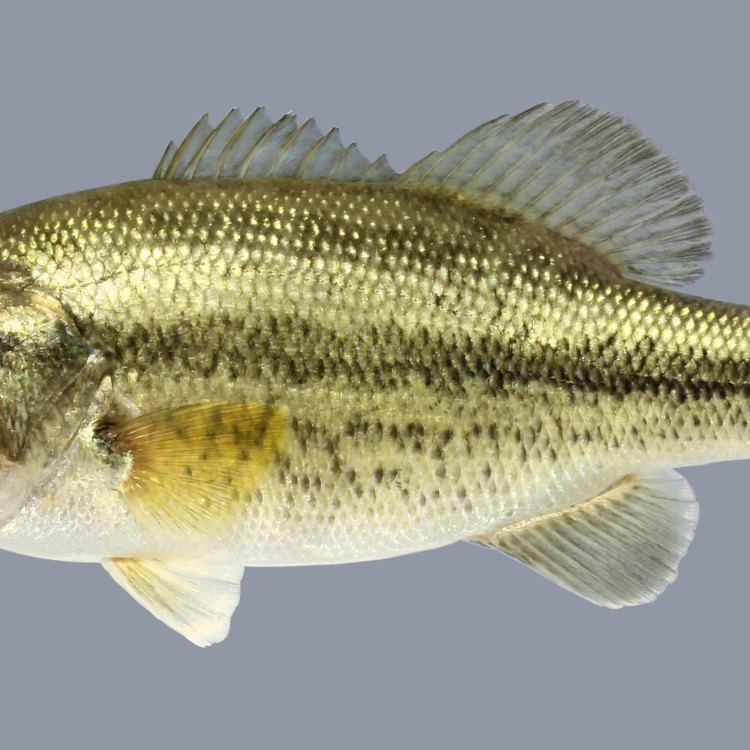
Black Bass
- Adult Size: Up to 60 cm
- Average Lifespan: 10-16 years
- Reproduction: Sexual
- Reproductive Behavior: Nest-builders, males guard the nest
- Sound or Call: Produces low-frequency drumming sounds
- Migration Pattern: Some populations migrate seasonally
- Social Groups: Solitary or in small groups
- Behavior: Aggressive predators
- Threats: Pollution, habitat loss, overfishing
- Conservation Status: Least Concern
- Impact on Ecosystem: Top predator in freshwater ecosystems
- Human Use: Recreational fishing
- Distinctive Features: Two dorsal fins, lower jaw extends past the eye
- Interesting Facts: Black Bass are highly sought after by anglers for their sport fishing qualities
- Predator: Other larger predatory fish
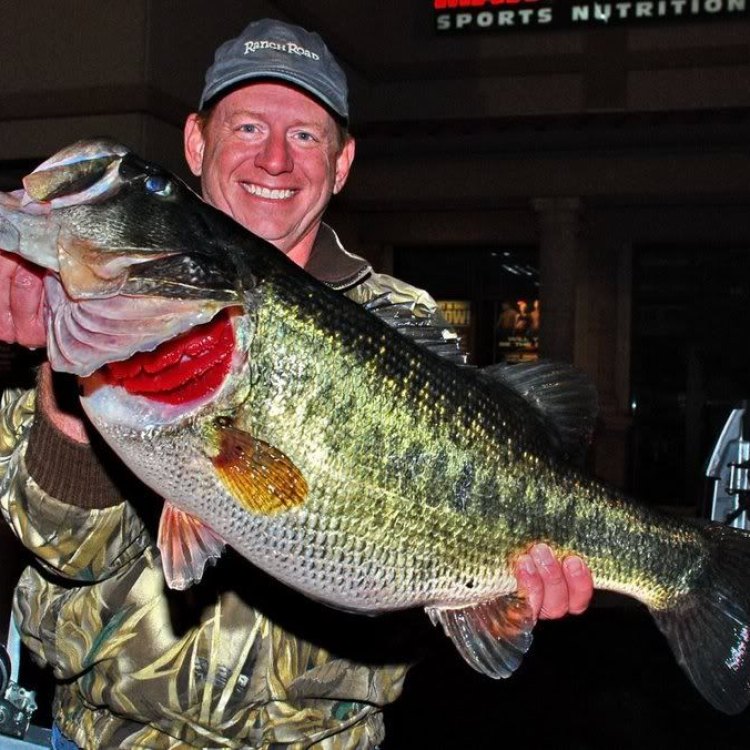
Micropterus
The Black Bass: The Aggressive and Admired Predator of Freshwater Ecosystems
When talking about freshwater fish, one species that is often at the top of the list is the Black Bass. These muscular and aggressive predators have captured the attention of anglers and researchers alike, with their impressive size, unique features, and vital role in their ecosystems. In this article, we will take a closer look at the Black Bass, exploring their adult size, average lifespan, reproductive behavior, migration patterns, social groups, behavior, threats, conservation status, impact on the ecosystem, human use, distinctive features, interesting facts, and predators.Adult Size
The Black Bass, or more commonly known as the Smallmouth Bass (Micropterus dolomieu), is famed for its size and strength PeaceOfAnimals.Com. On average, these fish can grow up to 60 cm in length, with the largest recorded fish being 71 cm long, and weighing over 11 kg. This makes them an impressive catch for any angler, and their size is part of the reason why they are highly sought after for sport fishing.
Average Lifespan
Black Bass have an average lifespan of 10-16 years, depending on various factors such as habitat and food availability. However, in some cases, they have been recorded to live up to 24 years. This longevity allows them to play a crucial role in their ecosystem as top predators, helping maintain a balance in their freshwater habitats.
Reproduction
As with many fish, Black Bass reproduce sexually, with females releasing eggs while males fertilize them. What makes them unique is their reproductive behavior. During spawning season, males construct nests on the lake or river bed by clearing out debris and creating a small depression. The females then deposit their eggs into the nests, and the males guard and protect them until they hatch Blue Jay. This behavior ensures the survival of the next generation of Black Bass.
Sound and Call
A fascinating aspect of Black Bass behavior is their ability to produce low-frequency drumming sounds. These sounds are believed to be used for courtship and to communicate with other fish. This makes them one of the few freshwater fish species that are known to vocalize. So, the next time you hear a low drumming sound while out fishing, it may just be the Black Bass trying to communicate with its fellow bass.
Migration Pattern
While some populations of Black Bass are known to stay in one location all year round, others exhibit a seasonal migration pattern. These migrations usually occur in response to environmental changes, such as water temperature and food availability. This behavior also allows for genetic diversity and the dispersal of young fish to new habitats.
Social Groups
Black Bass can be solitary or found in small groups. They are not known to form large schools like many other fish species. Instead, they prefer to hunt alone or with a few other bass. This behavior may be due to their aggressive and territorial nature, which we will discuss in the next section.
Behavior
Black Bass are aggressive predators and known for their opportunistic feeding habits. They are opportunistic in the sense that they will feed on whatever is available, including crayfish, insects, smaller fish, and even small mammals such as mice that may fall into the water. Their aggressive nature and large size make them apex predators in their freshwater ecosystems, keeping populations of smaller fish in check.
Threats
Like many other fish species, Black Bass face various threats that can negatively impact their population and habitat. Pollution, particularly from agricultural and industrial run-off, is a significant threat to their survival. This type of pollution can cause changes in water quality, affecting the amount of oxygen available for fish to breathe and disrupting their reproductive behavior. Habitat loss is also a significant concern, as human development and construction can destroy or alter their natural habitats. Finally, overfishing is an ongoing concern, as Black Bass are highly sought after for recreational fishing.
Conservation Status
Despite facing threats, the Black Bass has been given a "Least Concern" status by the International Union for Conservation of Nature (IUCN). This is due to their widespread distribution and relatively stable populations. However, conservation efforts and management plans are in place to ensure their continued survival and wellbeing.
Impact on Ecosystem
As mentioned earlier, Black Bass play a vital role as top predators in their freshwater ecosystems. But their impact goes beyond that. They also help regulate populations of smaller fish, which in turn helps maintain the overall balance of the ecosystem. This is crucial in maintaining the health and biodiversity of these ecosystems, making them an essential species to protect.
Human Use
Black Bass may be predators, but they are also highly valued by humans for recreational fishing. Their size, strength, and exciting fight make them a popular target for anglers. In fact, according to the US Fish and Wildlife Service, they are one of the most popular game fish in North America. Their popularity has also led to the development of "catch-and-release" fishing, where anglers release the fish back into the water after catching it, promoting sustainable fishing practices.
Distinctive Features
One distinct feature that sets Black Bass apart is their two dorsal fins, one located towards the back of their body and the other closer to their tail. This is unique to this species and helps them maneuver swiftly through the water. Another prominent feature is their lower jaw, which extends past their eye. This gives them a distinctive appearance and aids in their ability to catch prey.
Interesting Facts
Aside from their impressive size and unique reproductive behavior, Black Bass have a few other interesting features. Did you know that they were introduced to Europe in the late 19th century and are now widespread in many European countries? They are also highly adaptable and can thrive in a variety of habitats, from clear lakes to murky rivers. And as mentioned earlier, they are one of the few freshwater fish species that can vocalize.
Predator
As with many fish, Black Bass do face predation from other larger fish species. Some of their predators include Northern Pike, Muskellunge, larger Bass, and sometimes birds like Osprey and Bald Eagles. This is just another reason why their aggressive and protective behavior is essential for their survival.
In conclusion, the Black Bass is a fascinating and important species in freshwater ecosystems. From their impressive size and unique features to their reproductive behavior, migration patterns, and vital role as top predators, they are worth admiring and studying. But as with any species, human impact can pose a threat to their survival. It is crucial to continue conservation efforts and responsible fishing practices to ensure that the Black Bass remains a dominant and admired predator for generations to come.
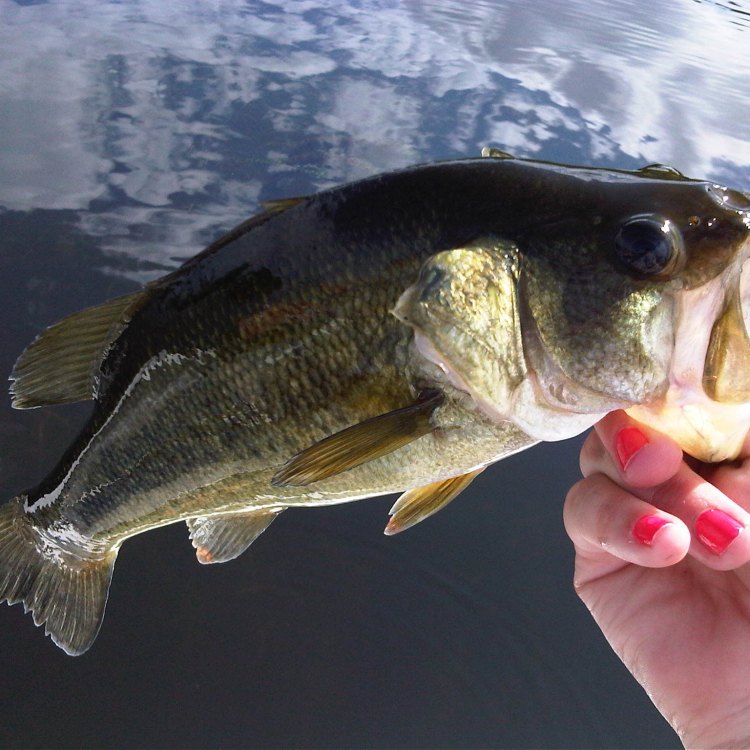
The Mighty Black Bass: Predator of Freshwater
Disclaimer: The content provided is for informational purposes only. We cannot guarantee the accuracy of the information on this page 100%. All information provided here may change without prior notice.





